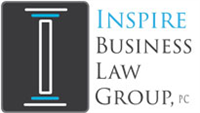Need to Generate Liquidity from your Business? A Minority Recapitalisation may be the Answer

Business owners may find themselves in situations where they wish to release large amounts of liquidity from their business, whilst retaining overall control of their company. A minority recap may be the solution. This typically combines different tranches of debt with the issue of new preference shares to enhance your company’s debt capacity. Key determining metrics are EBITDA and operating cash flow multiples.
- Senior debt – including tranches of asset-based loans and traditional bank loans secured by liens on the business. Such debt amortizes over fixed repayment periods. The loan agreements typically impose a strict maximum senior debt/EBITDA limit for the borrower, such as 3.5x. Often, the amounts raised are insufficient to cover the liquidity objectives of the owner or the firm.
- Mezzanine debt – also known as junior debt, is subordinate to senior debt but senior to equity. The interest cost of this tranche is higher than senior debt. A key advantage is that It can be arranged to be non-amortizing (via PIK notes), meaning that there are no regular annual debt repayments during the term of the loan. This may provide the owner with valuable operating headroom in case cash generation from the business is insufficient to allow consistent investments for future growth.The initial cost of mezzanine debt can be further lowered though the issue of warrants to the lenders which provide the right to purchase shares in the company. The maximum borrowing for this tranche is typically much lower than the senior tranche, say 1.0 to 1.5x EBITDA. Although mezzanine debt normally has a lien on the firm’s common equity, it is broadly unsecured.
- Equity – If the amount of capital required exceeds the debt capacity of the company, raising mezzanine debt can be combined with issuing preferred equity. As mentioned above, the mezzanine loan agreement may include a mechanism for the lender to become an equity investor in the company though the exercise of warrants. Preferred equity has a similar function to mezzanine debt, receiving a fixed dividend, rather than interest. Legally, however, these instruments are different. Preference shares confer direct ownership rights, but they have no reach into any of the business assets in case of default. Although preference shareholders may obtain observer rights or board representation, they exercise very limited control. Therefore, any dilution of the existing owners’ control rights is minimized.
Minority recaps using mezzanine financing are particularly suitable in situations where the owners want to invest in the business because there is high confidence of achieving significant growth. Examples are the funding of a bolt-on acquisition or expansion into a fast-growing market. Alternatively, the proceeds from the recap can be used to benefit the shareholders, rather than the company. One option is to pay a large one-off dividend to the shareholders to enable them to diversity their wealth. In a similar vein, the recap can also be a tool for family companies to facilitate the redistribution of ownership among different generations. In this case, the company can use the liquidity to buy-back the stock of older shareholders, allowing family members who are actively running the business to become majority-owners.
Overall, minority recaps are very flexible. Using the different types of capital, it should be possible to create an optimum balance between future debt capacity, free cash flow and control of the business.
If you require any further information about starting a business, please contact Edward Grenville, Managing Shareholder, Inspire Business Law Group, PC (egrenville@inspirelawgroup.com; +415 279 0779; www.inspirelawgroup.com).
This article is provided for educational and informational purposes only and is not intended to be, and should not be construed as, legal advice.
Written by Benjamin Bartsch.
Inspire Business Law Group
-
Edward Grenville Partner
- April 16, 2024
- (415) 279-0779
- Send Email


